
The Congress Center takes up the site of an old parking lot that was demolished in order to give such valuable location a more intensive use, given the scarce amount of space available in the historic center.

The Spanish architect's approach is essentially mimetic. He has introduced a platform, or terrace, into the existing mix of buildings and vegetation on the steep, fortified flanks of Toledo as it rises on a high bluff overlooking the Tagus River.

The building forms part of a master plan developed by the Barcelona urbanist Joan Busquets in 1993, which sought to improve access to the hilltop core of this Unesco World Heritage site and to promote new activities. Busquets's plan included new parking areas at the hill's base, with escalators to the city above.
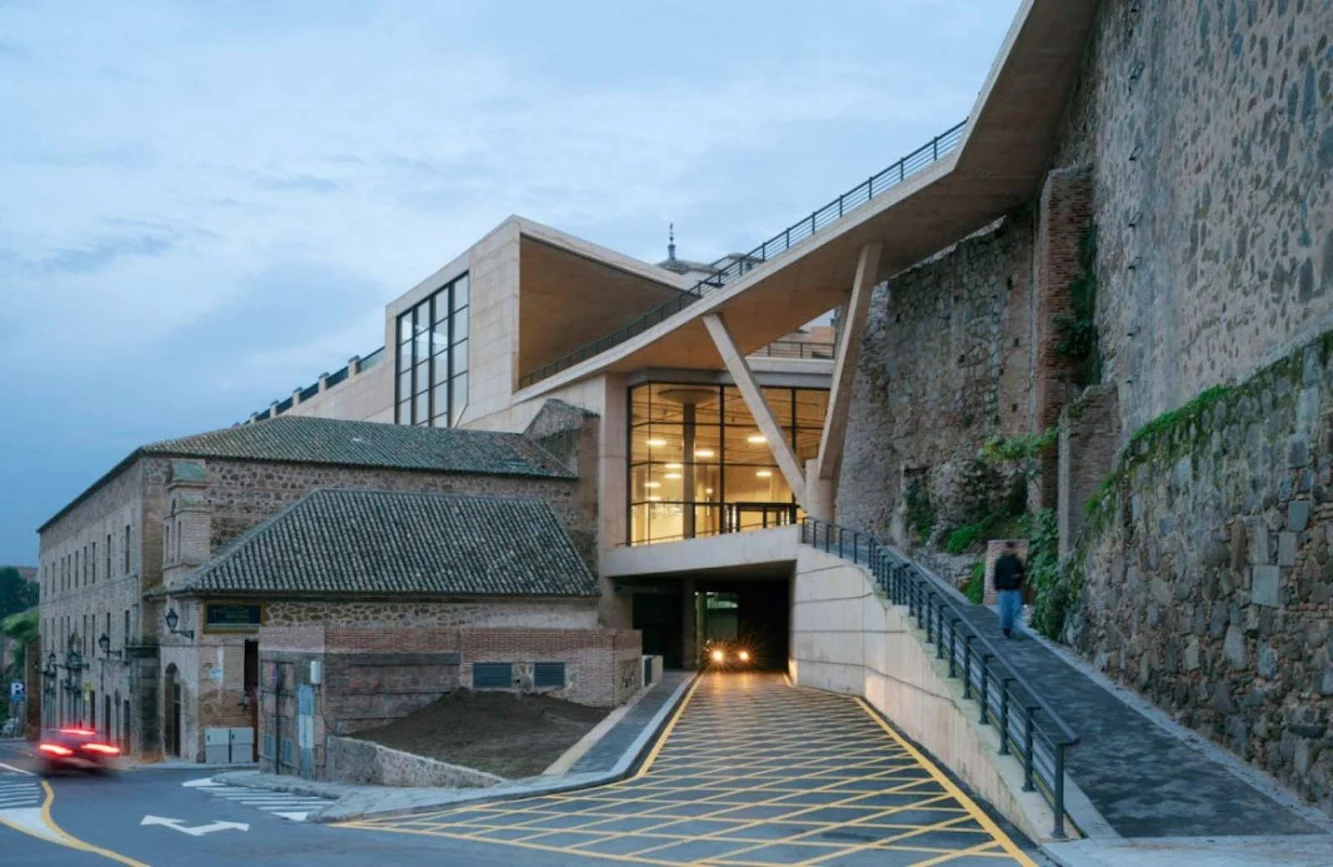
Moneo suggested moving the parking to the site of an unattractive existing garage, replacing the structure with a new building that also includes a conference facility originally planned for another site. the center's outer wall replaces sections of old rubble walls, in poor condition and of no historical value.
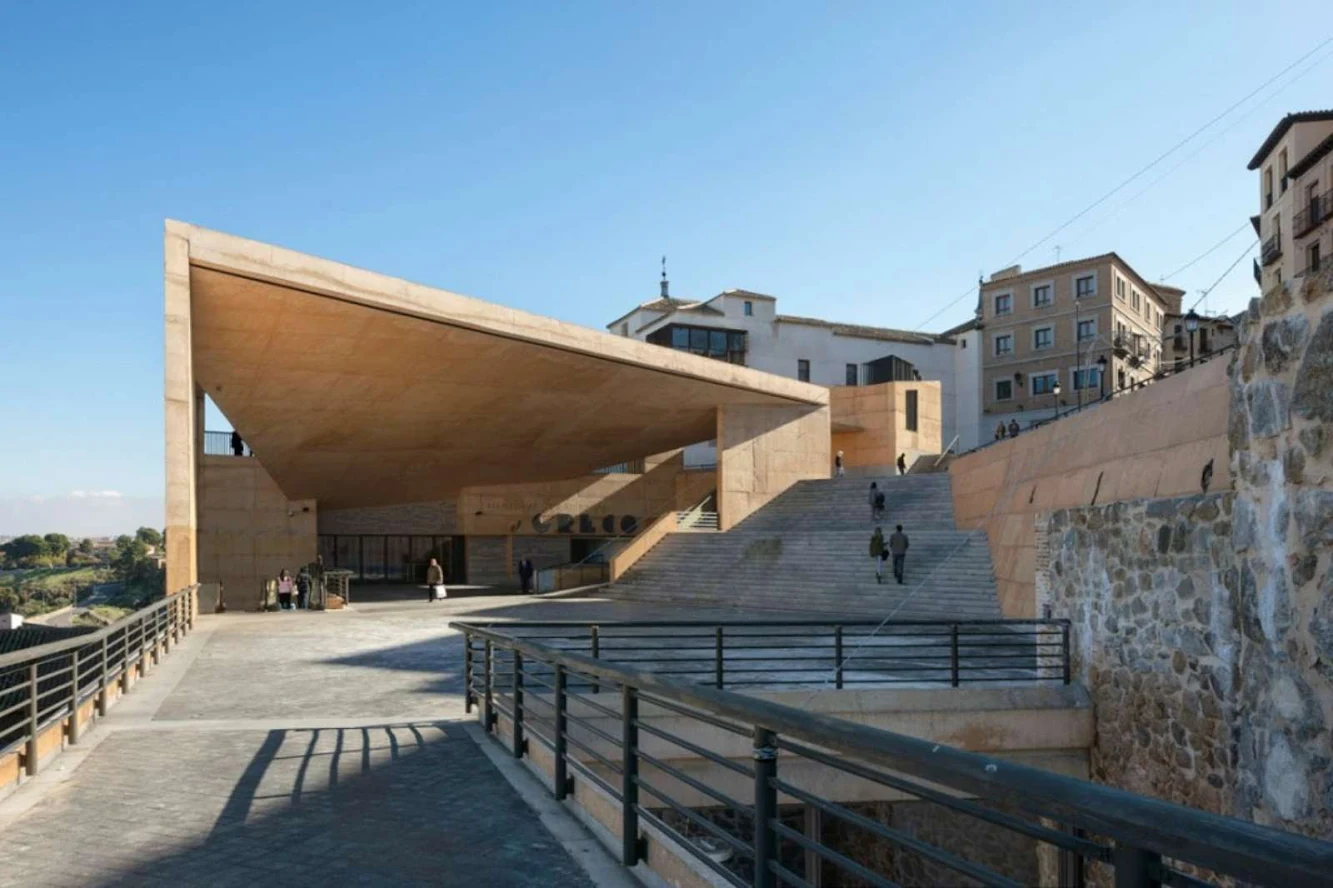
The excavation behind it accommodates five levels of parking for 600 cars and the convention center with a 1,000-seat auditorium, a multipurpose hall with a capacity for 500, a restaurant, and four smaller conference rooms, all topped by a terracelike roof that has become a popular evening attraction.

Moneo marks the entry to the building with a series of studied formal gestures that constitute his contemporary contribution to the urban fabric. the roof of the building has been converted into a landscaped garden square, giving back to the public the antique space called “Paseo del Miradero”.
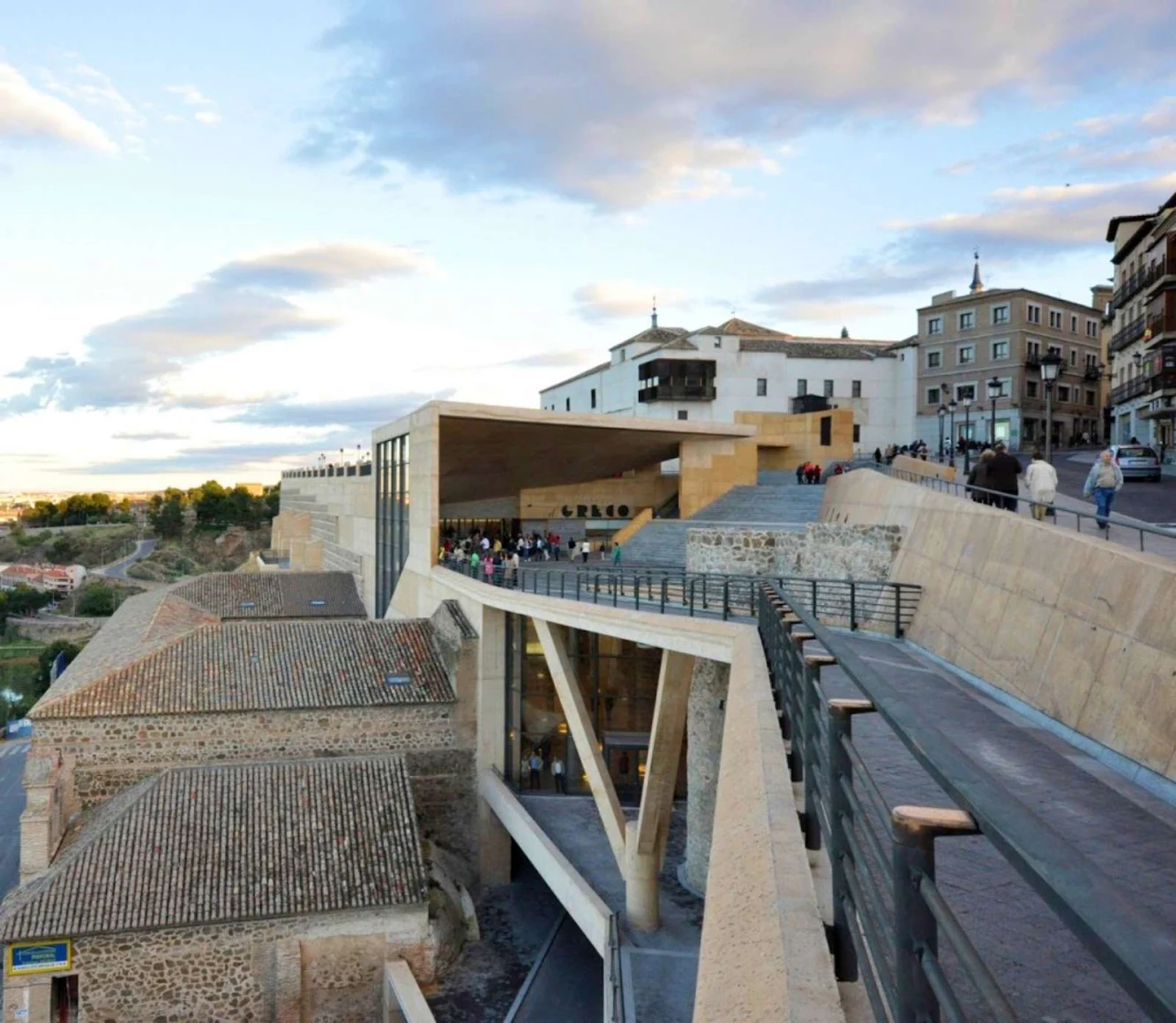
The natural conditions of the site –the topography- allows for the parking lot to be designed with entrances and exits from the lower level, while the congress centre accesses are made available from the historic city centre level.

Runs of escalators descend from the plaza along the inside face of the building's exterior wall to the street below, where they connect with a drop-off point for tour buses and to the main bus and train stations, located a few blocks away. the building thus functions as a key connector between transportation hubs and the city.
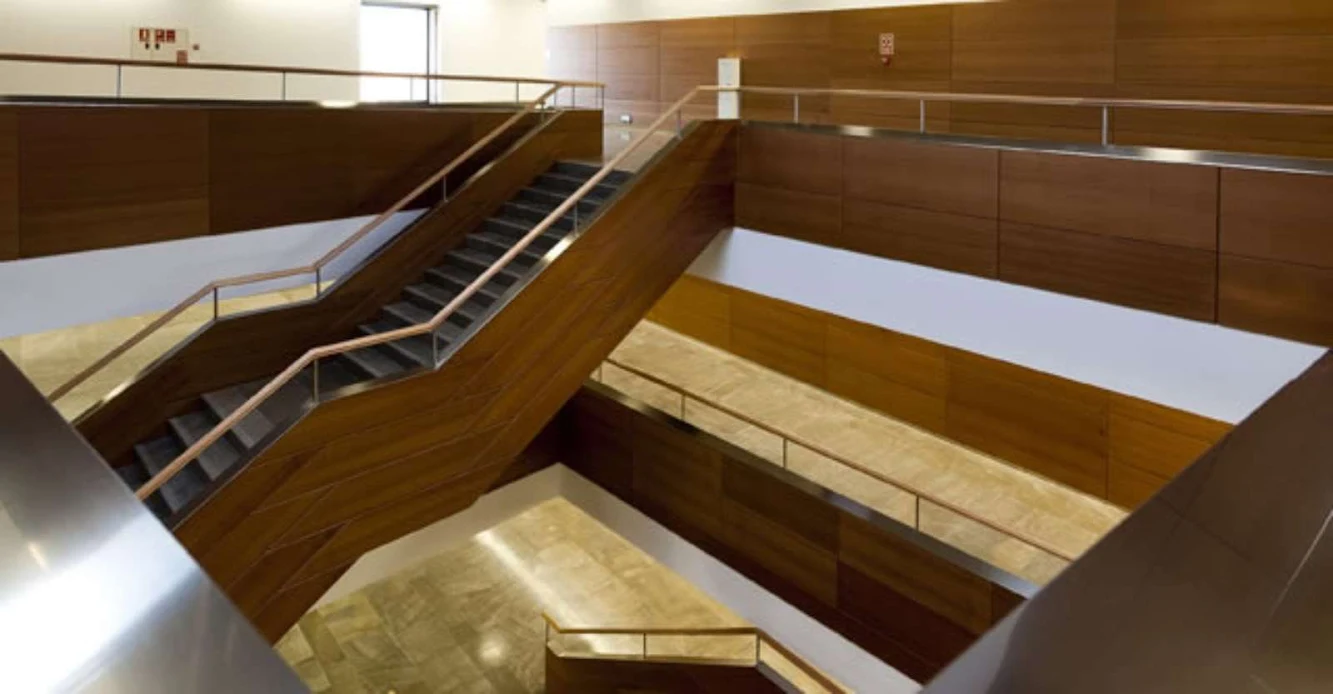

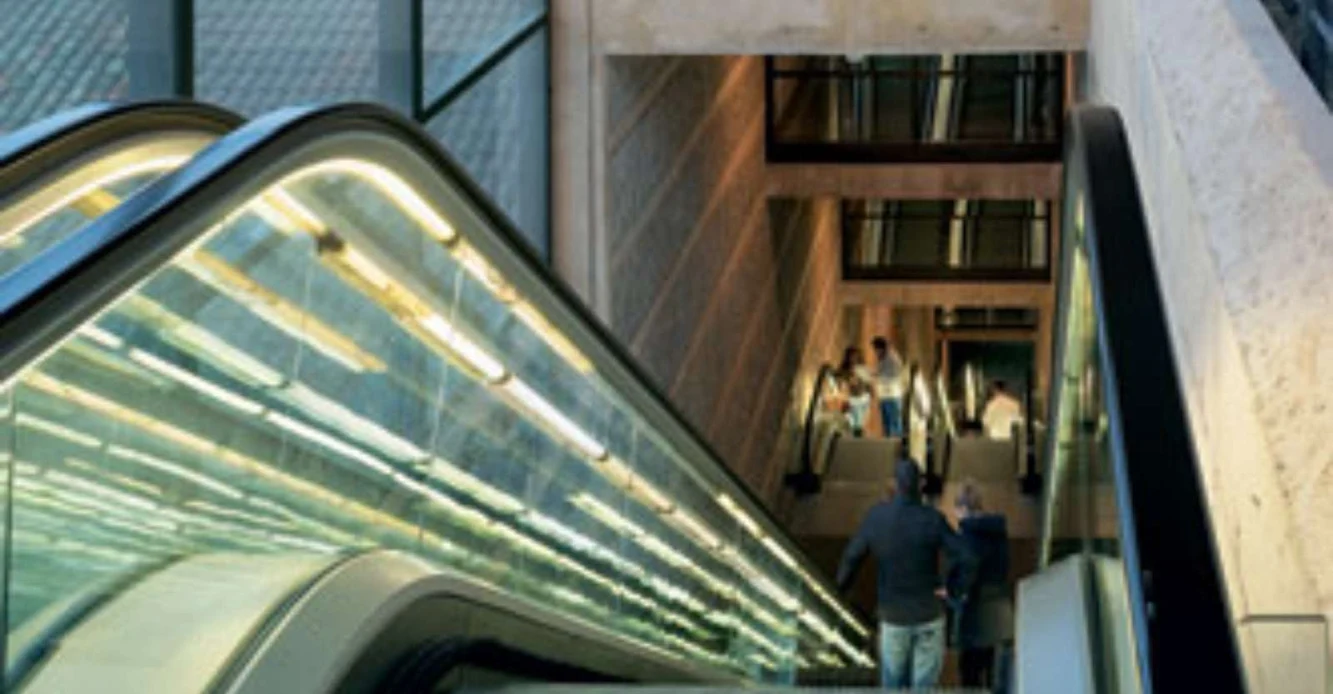

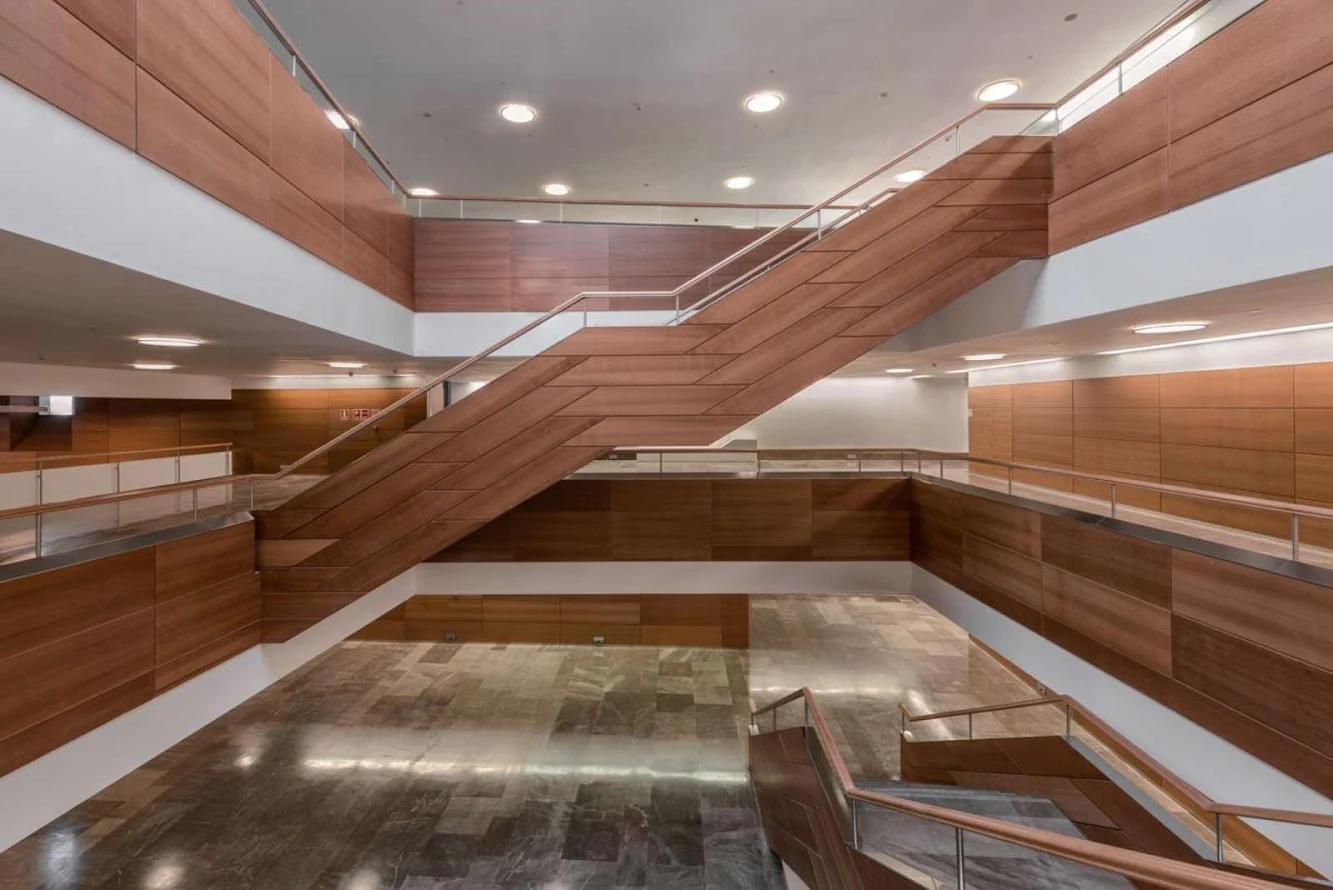
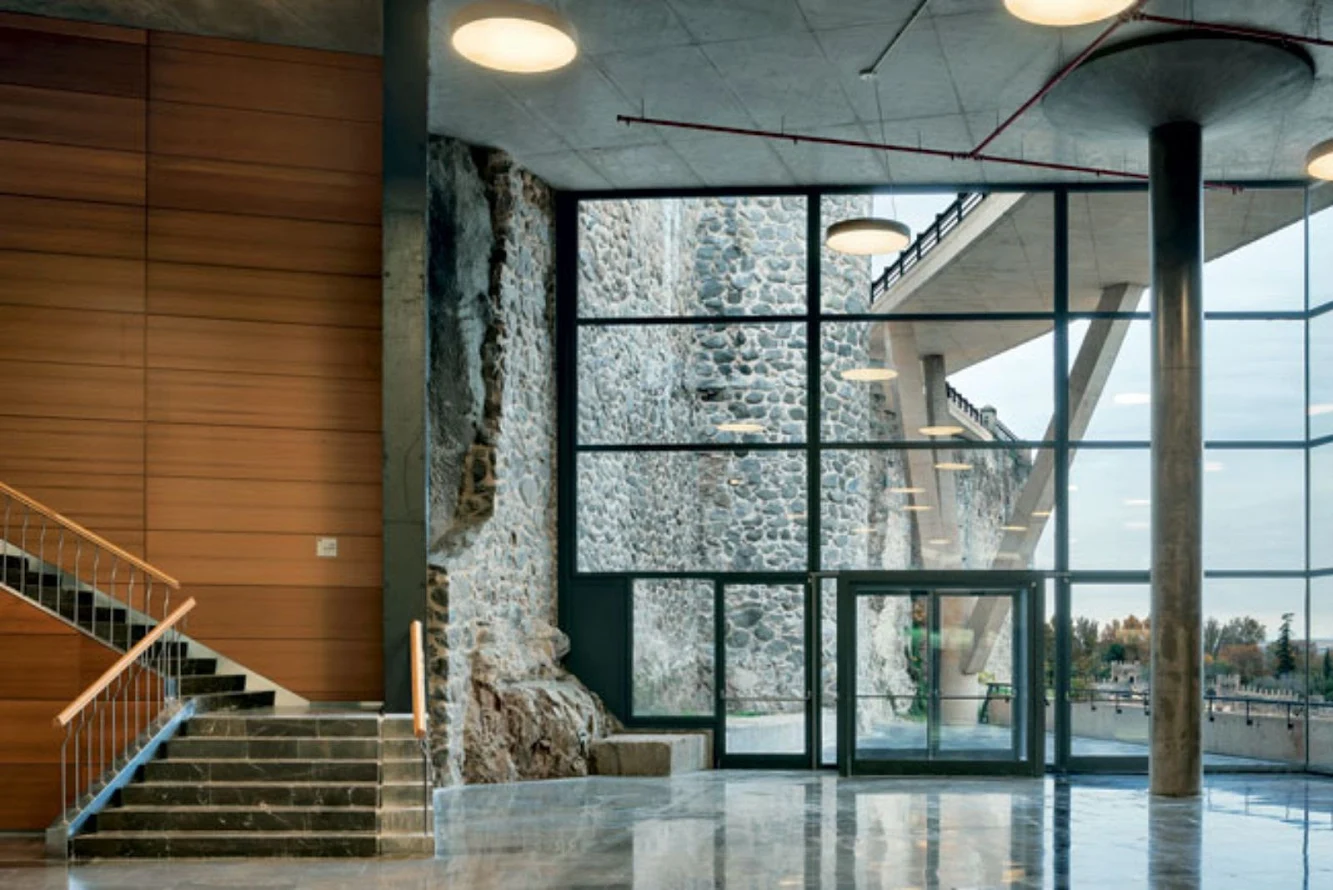


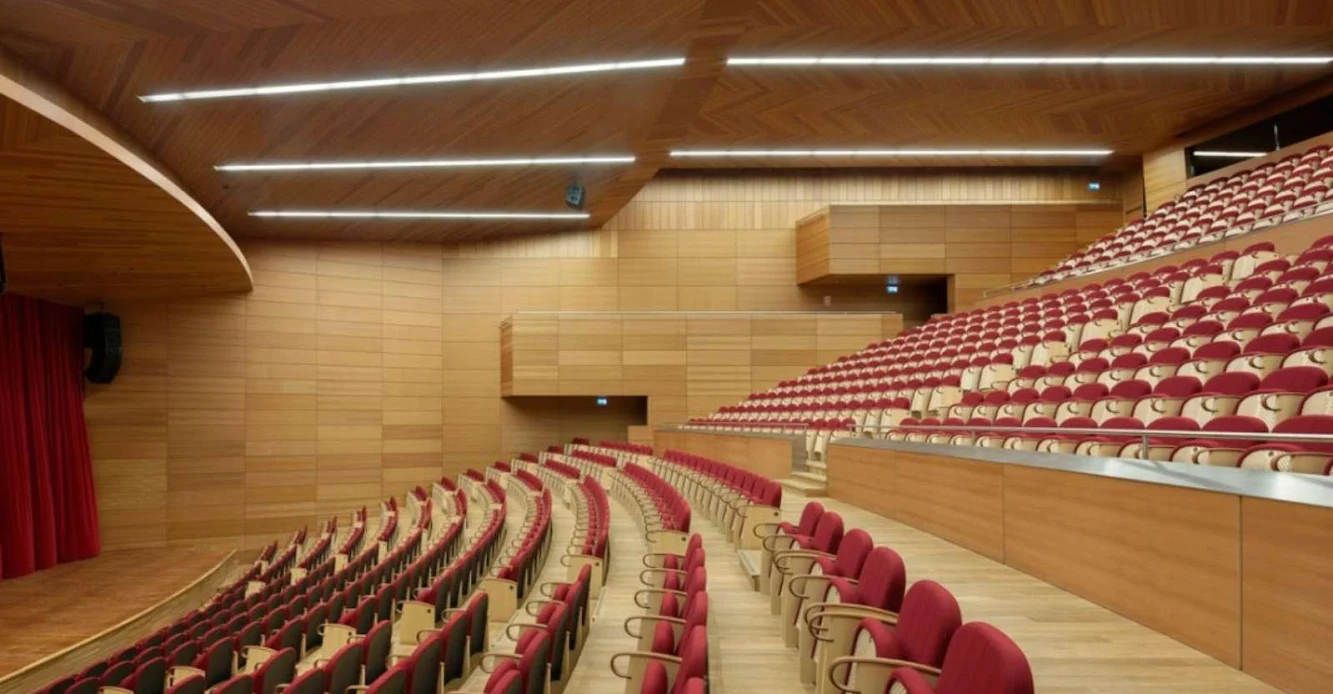

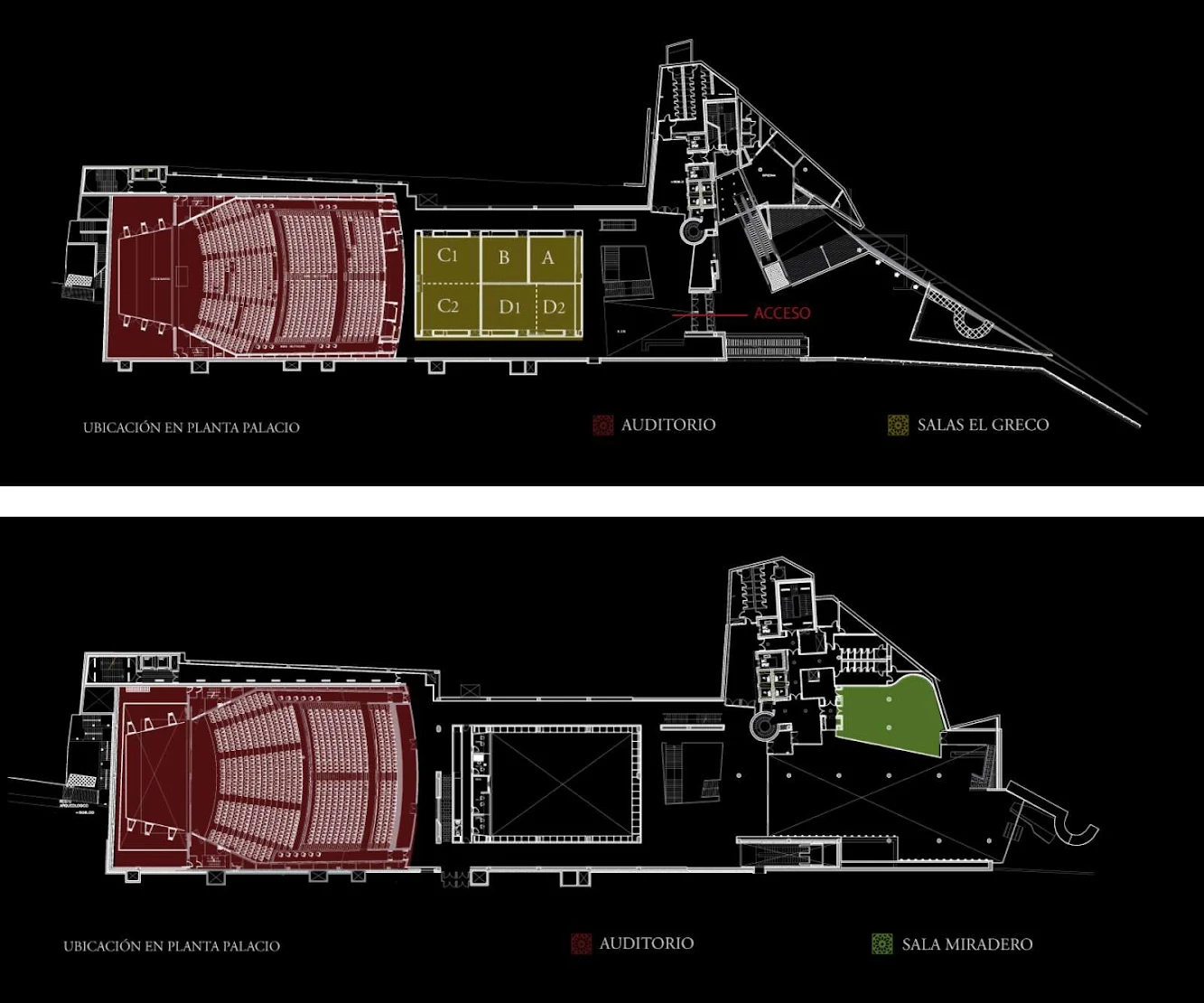

Location: Paseo del Miradero, Toledo, Spain Architect: Rafael Moneo Architect collaborator: Oliver Bieniussa Quantity surveyors: Vidal Gutiérrez de Sande, Gonzalo Romero, Francisco Peiro González Structural engineer: Jesús Jiménez Cañas, Nb 35 Ingenieros Mechanical engineer: Rafael Úrculo Aramburu, Úrculo Ingenieros Consultores Acoustics: Higini Arau Surface area: 42.500 m² Year: 2011 Client: Local government of Toledo